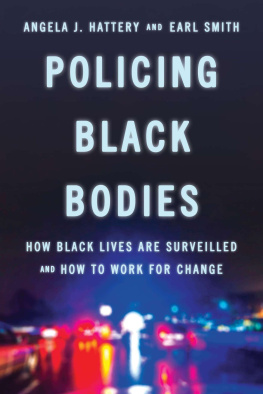Anne Gray Fischer - The Streets Belong to Us: Sex, Race, and Police Power from Segregation to Gentrification
Here you can read online Anne Gray Fischer - The Streets Belong to Us: Sex, Race, and Police Power from Segregation to Gentrification full text of the book (entire story) in english for free. Download pdf and epub, get meaning, cover and reviews about this ebook. year: 2022, publisher: University of North Carolina Press, genre: Home and family. Description of the work, (preface) as well as reviews are available. Best literature library LitArk.com created for fans of good reading and offers a wide selection of genres:
Romance novel
Science fiction
Adventure
Detective
Science
History
Home and family
Prose
Art
Politics
Computer
Non-fiction
Religion
Business
Children
Humor
Choose a favorite category and find really read worthwhile books. Enjoy immersion in the world of imagination, feel the emotions of the characters or learn something new for yourself, make an fascinating discovery.

- Book:The Streets Belong to Us: Sex, Race, and Police Power from Segregation to Gentrification
- Author:
- Publisher:University of North Carolina Press
- Genre:
- Year:2022
- Rating:3 / 5
- Favourites:Add to favourites
- Your mark:
The Streets Belong to Us: Sex, Race, and Police Power from Segregation to Gentrification: summary, description and annotation
We offer to read an annotation, description, summary or preface (depends on what the author of the book "The Streets Belong to Us: Sex, Race, and Police Power from Segregation to Gentrification" wrote himself). If you haven't found the necessary information about the book — write in the comments, we will try to find it.
Men, especially Black men, often stand in as the ultimate symbol of the mass incarceration crisis in the United States. Women are treated as marginal, if not overlooked altogether, in histories of the criminal legal system. In The Streets Belong to Usa searing history of women and police in the modern United StatesAnne Gray Fischer narrates how sexual policing fueled a dramatic expansion of police power. The enormous discretionary power that police officers wield to surveil, target, and arrest anyone they deem suspicious was tested, legitimized, and legalized through the policing of womens sexuality and their right to move freely through city streets.
Throughout the twentieth century, police departments achieved a stunning consolidation of urban authority through the strategic discretionary enforcement of morals laws, including disorderly conduct, vagrancy, and other prostitution-related misdemeanors. Between Prohibition in the 1920s and the rise of broken windows policing in the 1980s, police targeted white and Black women in distinct but interconnected ways. These tactics reveal the centrality of racist and sexist myths to the justification and deployment of state power. Sexual policing did not just enhance police power. It also transformed cities from segregated sites of urban vice into the gentrified sites of Black displacement and banishment we live in today. By illuminating both the racial dimension of sexual liberalism and the gender dimension of policing in Black neighborhoods, The Streets Belong to Us illustrates the decisive role that race, gender, and sexuality played in the construction of urban police regimes.
Anne Gray Fischer: author's other books
Who wrote The Streets Belong to Us: Sex, Race, and Police Power from Segregation to Gentrification? Find out the surname, the name of the author of the book and a list of all author's works by series.




